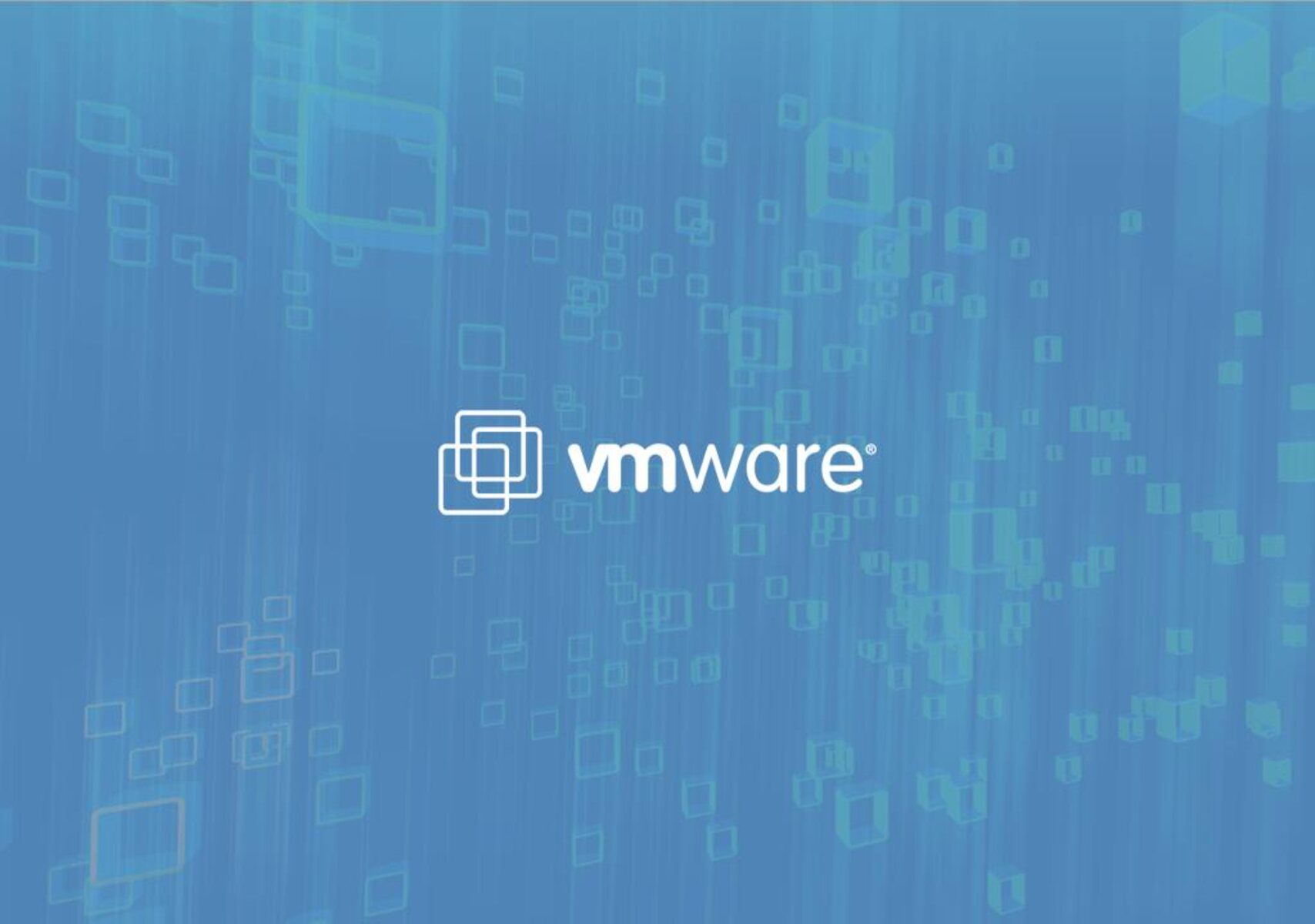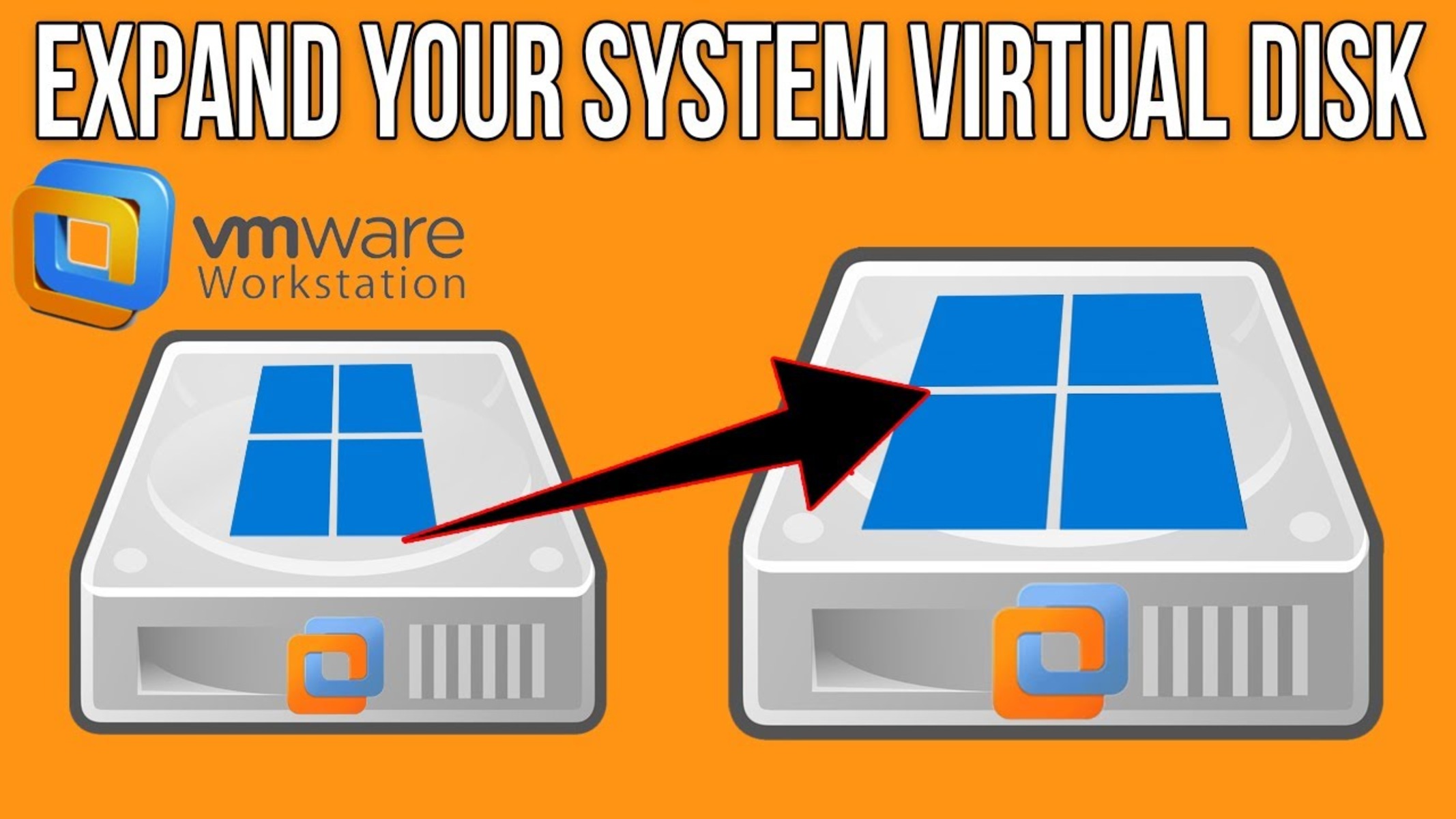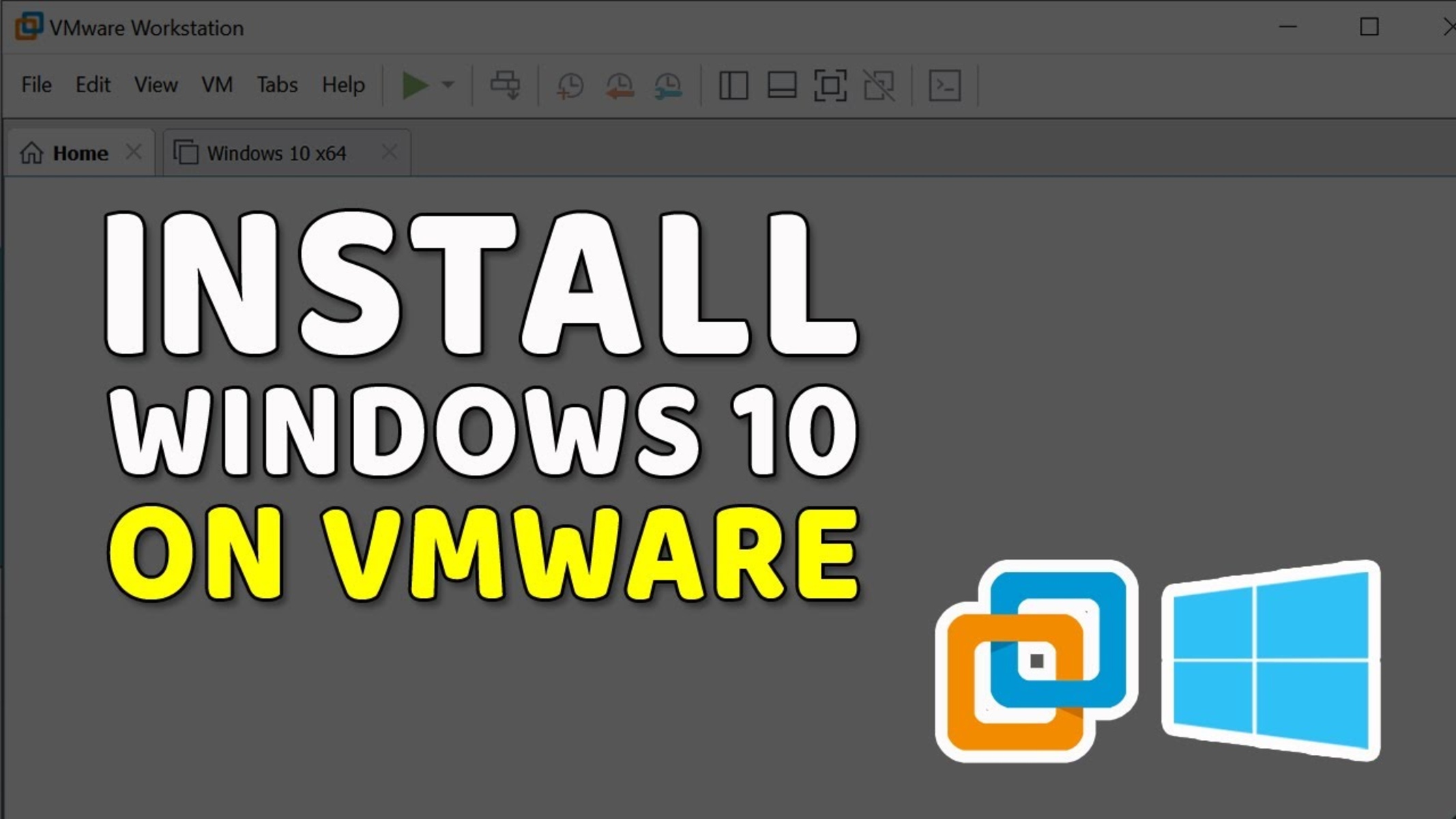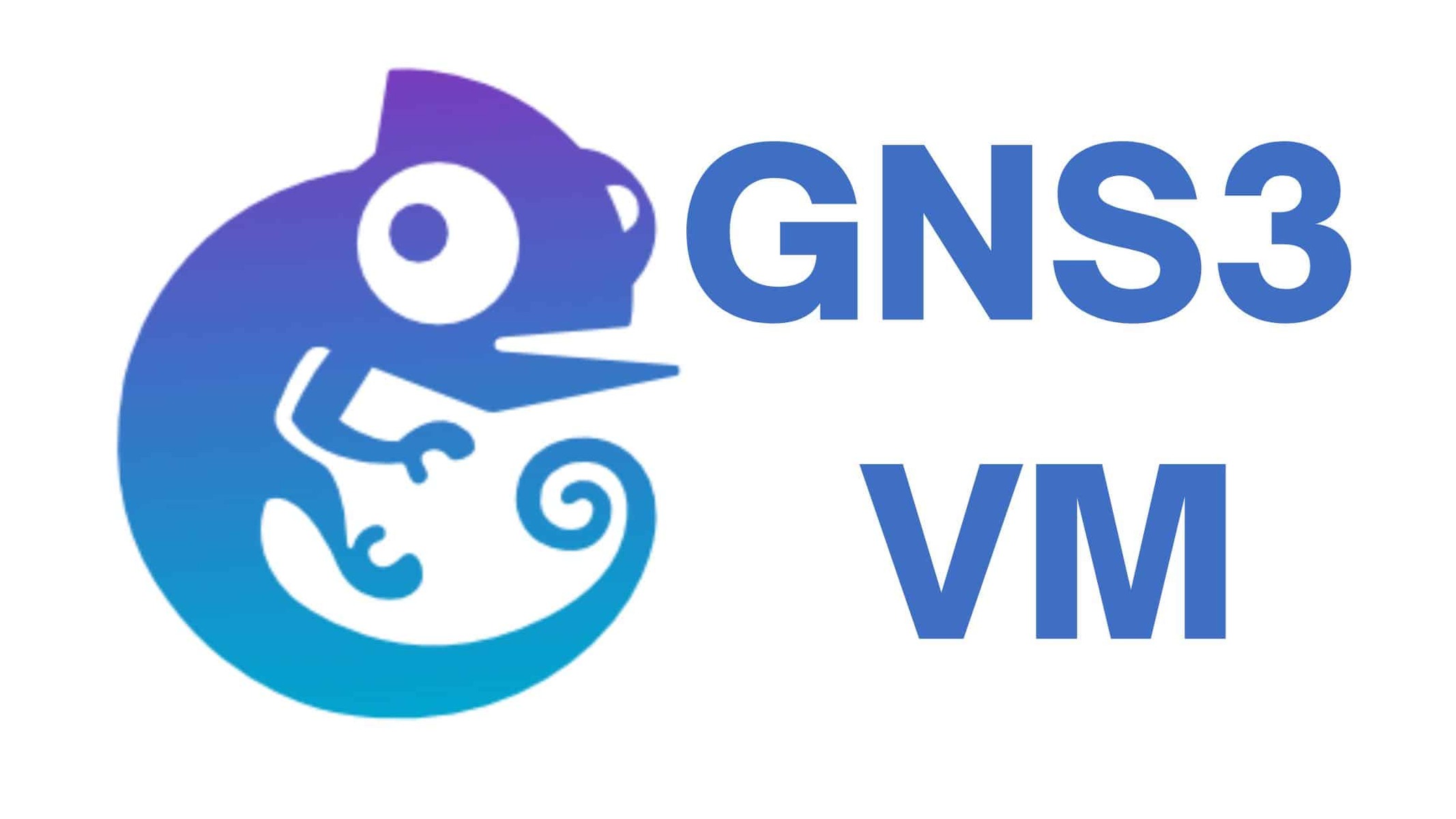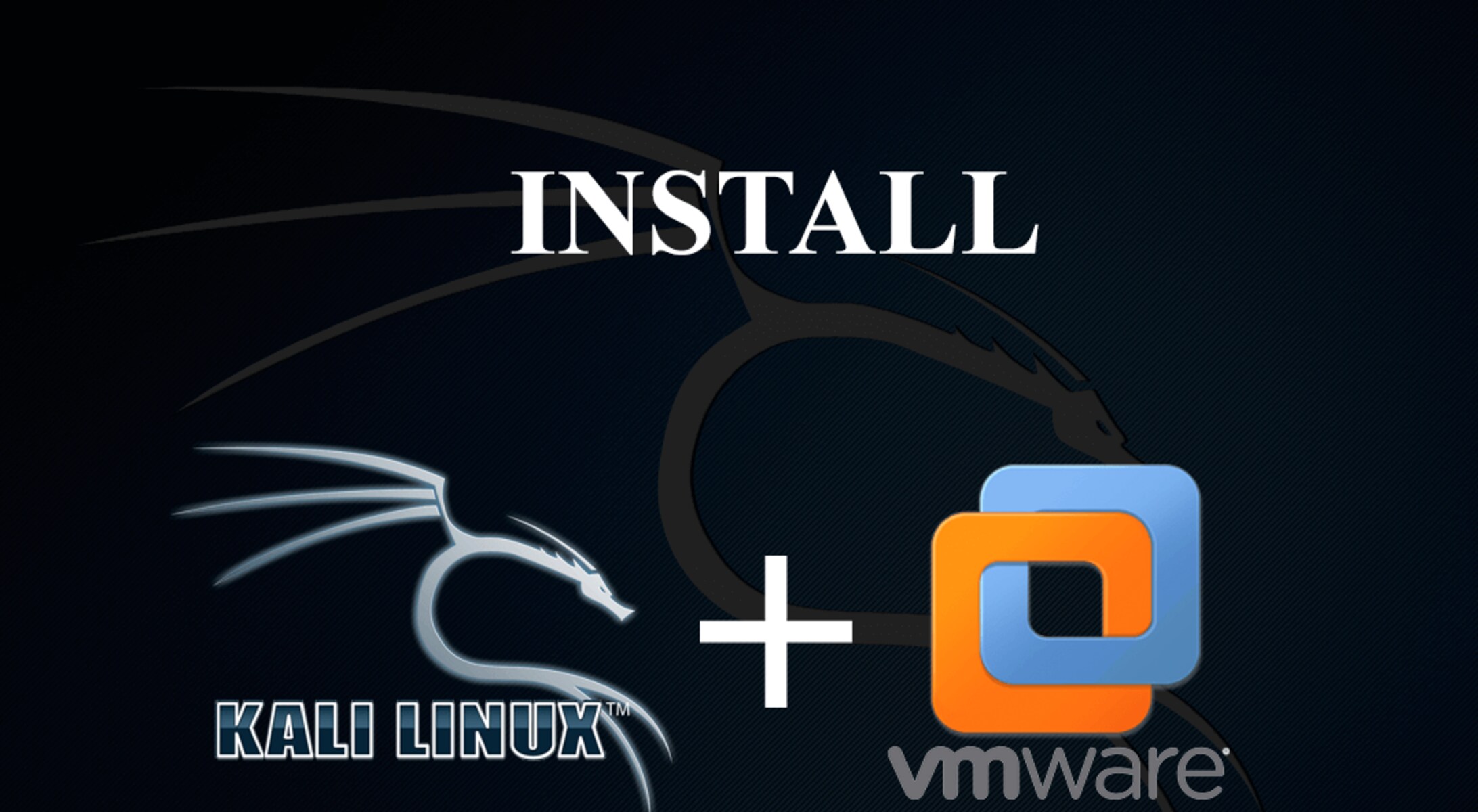Introduction
Welcome to the world of virtualization, where the power of multiple operating systems and applications converge on a single device. In this era of technological advancements, virtual machines have become an indispensable tool for developers, IT professionals, and enthusiasts alike. One such popular virtualization software is VM Workstation.
VM Workstation is a desktop virtualization software that allows users to run multiple operating systems simultaneously on a single physical machine. It creates virtual machines (VMs) that behave like separate computers, complete with their own virtual hardware, disks, and networks. Whether you need to run Windows on a Mac, try out a new Linux distribution, or test software on different environments, VM Workstation provides a robust and flexible platform to meet your needs.
With VM Workstation, you can easily switch between different operating systems without rebooting your computer. This means you can seamlessly run Windows, Linux, Mac, or even older versions of operating systems, all within the same environment. Say goodbye to the hassle of dual-booting or setting up separate physical machines for different purposes.
Not only does VM Workstation provide a convenient way to run multiple operating systems, but it also offers a range of powerful features. From easy-to-use interface and advanced networking options to snapshot management and virtual machine cloning, it empowers users to customize and optimize their virtual environments according to their specific requirements.
Whether you’re a developer looking to test your applications on different platforms, an IT professional managing multiple virtual servers, or an enthusiast exploring new software, VM Workstation simplifies the virtualization process and enhances your productivity.
In this article, we will delve into the intricacies of VM Workstation and explore how it works, the benefits it offers, common use cases, and how to get started with the software. Whether you’re a beginner or experienced user, there’s something valuable for everyone to learn about this powerful virtualization tool.
What is VM Workstation?
VM Workstation is a desktop virtualization software developed by VMware that enables users to create and run multiple virtual machines on a single physical computer. It provides a robust and flexible platform for running different operating systems, such as Windows, Linux, and macOS, simultaneously without the need for dual-booting or additional hardware.
With VM Workstation, users can create virtual machines that function as self-contained computers, complete with their own virtual hardware, operating systems, and applications. This allows for isolating and testing software in different environments, as well as providing a secure and efficient way to run multiple operating systems on a single machine.
VM Workstation offers a wide range of features and capabilities that make it a preferred choice for developers, IT professionals, and enthusiasts:
- Powerful Virtualization Technology: VM Workstation utilizes VMware’s advanced virtualization technology, enabling users to have seamless integration between the host and virtual machine environments. This ensures efficient performance and resource management.
- Easy-to-Use Interface: The user-friendly interface of VM Workstation makes it easy to create, manage, and customize virtual machines. It provides a graphical interface for managing virtual hardware, network settings, and storage options.
- Snapshots and Cloning: VM Workstation allows users to take snapshots of virtual machines at specific points in time, creating a backup of their state. This feature is useful for testing software or rolling back to a previous configuration. Additionally, users can clone virtual machines to create duplicates or templates for quick deployment.
- Advanced Networking Options: VM Workstation offers a variety of networking options, including bridged, NAT, and host-only. This allows virtual machines to have networking capabilities, either by bridging them to the host network or creating a separate network for virtual machines.
- Support for a Wide Range of Operating Systems: VM Workstation supports a vast array of operating systems, including various versions of Windows, Linux distributions, and macOS. This provides flexibility for software testing, development, and creating diverse computing environments.
VM Workstation is a versatile and powerful virtualization software that enables users to harness the benefits of running multiple operating systems on a single computer. It simplifies the process of virtualization, enhances productivity, and provides a platform for testing, development, and experimenting with different software environments.
How Does VM Workstation Work?
VM Workstation works by emulating a virtual computer within the host operating system. It creates a virtual machine (VM) that runs as a software instance on the physical computer, allowing users to install and run different operating systems and applications within the virtual environment.
The virtualization process begins with the installation of VM Workstation on the host machine. Once installed, users can create a new virtual machine or import an existing one. Each virtual machine is allocated a portion of the host machine’s resources, including CPU, memory, and storage.
When a virtual machine is powered on, VM Workstation emulates the hardware components of a physical computer, such as the processor, memory, graphics card, and network interfaces. It creates a virtual BIOS, which initializes the virtual machine and allows it to boot up with the selected operating system.
The virtual machine operates within a protected and isolated environment, independent of the host operating system. It has its own virtual hard drive, which is stored as a file on the host’s physical drive. The virtual machine interacts with the host hardware through virtualized drivers, ensuring smooth communication and access to resources.
VM Workstation provides various networking options to connect the virtual machine to the host network or create a separate network for virtual machines. Users can choose from bridged networking, which allows the virtual machine to appear as a separate device on the network, network address translation (NAT), which provides network access through the host’s IP address, or host-only networking, which creates a private network shared between the host and virtual machines.
One of the key features of VM Workstation is the ability to take snapshots of virtual machines. A snapshot captures the current state of the virtual machine, including its memory, storage, and settings. This allows users to revert back to a specific snapshot if any changes or modifications cause issues or errors. Snapshots can also be used to create different configurations or test new software without affecting the base virtual machine.
VM Workstation also offers the capability to clone virtual machines. This allows users to create duplicates of a virtual machine, either for backup purposes or to create templates for rapid deployment of multiple instances.
Overall, VM Workstation functions as a virtualization platform that emulates a complete computer system within the host operating system. It enables users to run multiple operating systems and applications simultaneously, providing a flexible and efficient way to utilize the resources of a single physical machine.
Benefits of Using VM Workstation
VM Workstation offers a multitude of benefits for users who require the flexibility and power of virtualization. Whether you’re a developer, IT professional, or simply a tech enthusiast, here are some of the key advantages of using VM Workstation:
- Run Multiple Operating Systems: With VM Workstation, you can run multiple operating systems simultaneously on a single physical machine. This eliminates the need for separate physical hardware or dual-booting, allowing for seamless switching between different operating systems.
- Test and Debug Software: VM Workstation provides a safe and isolated environment for testing and debugging software. Developers can quickly spin up virtual machines with different configurations and operating systems to ensure compatibility and identify and fix issues without impacting their host machine.
- Enhanced Security: Virtual machines created with VM Workstation are isolated from the host operating system, providing an additional layer of security. This is particularly useful when dealing with potentially malicious or unknown software, as any potential harm is contained within the virtual environment.
- Resource Optimization: VM Workstation optimizes resource allocation for virtual machines, allowing you to allocate specific amounts of CPU, memory, and storage to each virtual machine. This ensures efficient utilization of resources and enables you to run resource-intensive applications without impacting the performance of other virtual machines or the host system.
- Easy Environment Replication: VM Workstation simplifies the task of replicating development or testing environments across multiple machines. By using virtual machine clones, you can quickly set up identical virtual machines on different computers, ensuring consistency and reducing setup time.
- Snapshot and Rollback: The snapshot feature in VM Workstation allows you to capture the current state of a virtual machine and revert back to it at any time. This is incredibly useful when testing new software or making changes that may have unintended consequences. If something goes wrong, you can easily revert back to a known working state.
- Increased Productivity: VM Workstation eliminates the need for maintaining multiple physical machines or setting up complex dual-boot configurations. This saves time and effort, allowing you to focus on your work or experimentation without the hassle of managing separate hardware.
- Seamless Integration: VM Workstation seamlessly integrates with the host operating system, providing features like drag-and-drop file sharing, shared folders, and copy-and-paste functionality between the host and virtual machines. This streamlines the workflow and enhances productivity.
Overall, VM Workstation offers numerous advantages for individuals and organizations looking to leverage the power of virtualization. From running multiple operating systems to testing and debugging software, VM Workstation provides a flexible and efficient solution that enhances productivity, improves security, and optimizes resource utilization.
Common Use Cases for VM Workstation
VM Workstation is a versatile and powerful virtualization software that can be utilized in various scenarios. Here are some common use cases where VM Workstation excels:
- Software Development and Testing: VM Workstation is widely used by software developers for testing and debugging applications. It allows developers to create virtual machines with different operating systems and configurations to ensure software compatibility across multiple platforms. It also provides a safe and isolated environment for testing new software without affecting the host system.
- IT Evaluations and Training: VM Workstation provides an ideal platform for IT professionals to evaluate new software, operating systems, or patches before deploying them in a production environment. It also serves as a training tool, allowing IT professionals to create virtual machines to teach and demonstrate various systems and scenarios.
- Malware Analysis: Security professionals can leverage VM Workstation for analyzing and studying malware. By creating isolated virtual environments, they can safely execute potentially malicious software and observe its behavior without risking the integrity of their host system.
- Web Development and Testing: VM Workstation is valuable for web developers who need to test their websites or applications across different browsers and operating systems. By running virtual machines with various configurations, developers can ensure that their web content functions correctly and looks consistent on different platforms.
- Legacy Software Support: Many organizations rely on legacy software that may not be compatible with newer operating systems. VM Workstation allows businesses to run older versions of operating systems, ensuring continued support for these critical applications without the need for dedicated hardware.
- Virtual Appliance Testing: VM Workstation facilitates the testing of virtual appliances, which are pre-configured virtual machines with specific software applications or services. IT professionals and developers can deploy and evaluate virtual appliances quickly and efficiently within the virtualized environment of VM Workstation.
- Mobile Application Development: For mobile app developers, VM Workstation provides a convenient solution for testing their applications on different mobile platforms, such as Android, iOS, and Windows Phone. By emulating the necessary hardware and operating system environments, developers can ensure their mobile apps run smoothly on various devices.
- Gaming and Entertainment: VM Workstation can even be used for gaming enthusiasts who want to play games not supported by their host operating system. By creating a virtual machine with the required gaming environment, gamers can enjoy their favorite games without the need for separate gaming hardware.
These are just a few examples of the many use cases where VM Workstation can provide significant benefits. Whether you’re a software developer, IT professional, security analyst, web developer, or even a gamer, VM Workstation offers a reliable, flexible, and efficient way to utilize the power of virtualization for a wide variety of purposes.
Getting Started with VM Workstation
Ready to dive into the world of virtualization with VM Workstation? Here’s a step-by-step guide to help you get started:
- Obtain VM Workstation: Start by obtaining a copy of VM Workstation from the VMware website. They offer a free trial version with limited functionality, as well as a full-featured paid version. Choose the option that best suits your needs.
- Install VM Workstation: Once you have downloaded the installation file, run it to begin the installation process. Follow the on-screen instructions to install VM Workstation on your computer. It is a straightforward process that usually takes just a few minutes.
- Create a New Virtual Machine: After the installation is complete, launch VM Workstation. The software will guide you through the process of creating a new virtual machine. You will need to select the desired operating system, configure the virtual hardware specifications, and allocate the necessary resources.
- Install Operating System: Once the virtual machine is created, insert the installation media for the operating system you want to install, such as a CD, DVD, or ISO file. Follow the steps provided by the operating system installer to install the OS within the virtual machine.
- Configure Network Settings: By default, the virtual machine is connected to the host network using NAT. You can customize the network settings of the virtual machine based on your requirements. You can choose NAT, bridged, or host-only networking options to suit your needs.
- Install VMware Tools: VMware Tools is a set of utilities that enhances the performance and functionality of the virtual machine. It provides features like seamless mouse integration, improved graphics performance, and file sharing between the host and virtual machine. Install VMware Tools within the virtual machine to enjoy these benefits.
- Manage Virtual Machines: VM Workstation provides an intuitive interface for managing your virtual machines. You can start, stop, suspend, or restart virtual machines as needed. You can also take snapshots, clone virtual machines, and manage virtual hardware settings from within the VM Workstation interface.
- Explore Advanced Features: Once you are familiar with the basics, you can explore the advanced features of VM Workstation. This includes features like Teams, which allows you to manage groups of related virtual machines together, or remote connections that enable you to control virtual machines from other devices on your network.
- Stay Updated: Keep your VM Workstation software up to date by regularly checking for updates from VMware. Updates often bring bug fixes, performance improvements, and new features to enhance your virtualization experience.
By following these steps, you’ll be well on your way to mastering VM Workstation and leveraging its powerful virtualization capabilities.
Installing VM Workstation
Installing VM Workstation is a straightforward process that allows you to quickly set up and start using the powerful virtualization software. Here’s a step-by-step guide to help you install VM Workstation on your computer:
- Obtain the Installation File: Start by obtaining the VM Workstation installation file from VMware’s official website. You can choose between a free trial version with limited functionality or a full-featured paid version depending on your needs.
- Launch the Installer: Once you have downloaded the installation file, locate it in your downloads folder or designated location. Double-click on the installer to launch the installation process.
- Accept the License Agreement: Read the license agreement carefully and, if you agree to the terms, click on the “I accept the terms in the license agreement” checkbox. This confirms your acceptance of the terms and enables you to proceed with the installation.
- Select the Installation Location: The installer will prompt you to choose a location on your computer to install VM Workstation. You can either use the default location or select a different directory by clicking on the “Browse” button. Choose the location that suits your preferences and click “Next”.
- Choose Additional Components: VM Workstation offers additional features that you can choose to install along with the main software. These may include VMware Tools, which enhance the performance and functionality of virtual machines. Select the desired components and click “Next”.
- Configure Shortcuts: The installer provides options to create shortcuts on your desktop and in the Start menu. Decide whether you would like these shortcuts and select the appropriate checkboxes accordingly. Click “Next” to continue.
- Ready to Install: Review the installation settings and ensure they are accurate. If everything looks correct, click the “Install” button to initiate the installation process.
- Progress and Completion: The installer will now proceed to install VM Workstation on your computer. You will be able to monitor the progress of the installation and should not navigate away from the installation window until it is complete. Once the installation is finished, click “Finish” to exit the installer.
- Activate Your License: If you are using a paid version of VM Workstation, you will need to activate your license. Launch VM Workstation, and you will be prompted to enter the license key you received upon purchase. Follow the instructions to activate your license and unlock the full features of the software.
- Stay Updated: Regularly check for updates from VMware to ensure that you have the latest features, bug fixes, and security patches. You can access the update feature within VM Workstation itself or by visiting VMware’s website.
By following these steps, you can successfully install VM Workstation on your computer and begin harnessing the power of virtualization.
Setting Up Virtual Machines
Setting up virtual machines (VMs) is a crucial step in harnessing the full capabilities of VM Workstation. Whether you want to run multiple operating systems or test software in different environments, here’s a step-by-step guide to help you set up virtual machines using VM Workstation:
- Create a New Virtual Machine: Launch VM Workstation and click on the “Create a New Virtual Machine” option in the main interface. This will initiate the virtual machine creation wizard.
- Select a Configuration Method: VM Workstation provides two configuration methods: Typical and Custom. The Typical configuration method offers predefined options for the operating system you want to install. The Custom configuration method provides more flexibility and allows you to customize various settings.
- Choose the Guest Operating System: Select the guest operating system you plan to install in the virtual machine. This can be Windows, Linux, macOS, or other supported operating systems.
- Configure Virtual Hardware: In this step, you can customize the virtual hardware settings of the virtual machine. You can allocate memory, choose the number of processors, configure networking options, and specify the amount of storage for the virtual machine.
- Install the Guest Operating System: Depending on the configuration method chosen, you may be prompted to install the guest operating system immediately or later. Follow the installation wizard and provide the necessary installation media (CD, DVD, ISO) for the guest operating system.
- Install VMware Tools: After the guest operating system is installed, it is recommended to install VMware Tools within the virtual machine. VMware Tools provides improved performance, graphics, and integration features between the host and guest operating systems.
- Customize Additional Settings: Once the basic setup is complete, you can further customize the virtual machine by adjusting virtual hardware settings, configuring network options, enabling shared folders, setting up virtual devices, and more to accommodate specific requirements.
- Power On the Virtual Machine: When you are satisfied with the virtual machine settings, power on the virtual machine within VM Workstation. The guest operating system will boot up, and you can begin using it as you would on a physical computer.
- Snapshot and Clone: To capture a specific state of the virtual machine for future reference or as a backup, you can take a snapshot within VM Workstation. This allows you to revert back to a specific snapshot if needed. Additionally, you can clone the virtual machine to create duplicates or templates for replication or easy distribution.
- Manage and Organize Virtual Machines: As you create more virtual machines, it’s essential to manage and organize them efficiently. VM Workstation provides features to group related virtual machines together, create folders for better organization, and monitor and control virtual machines from the main interface.
By following these steps, you can set up virtual machines with VM Workstation and harness the benefits of running multiple operating systems or testing software in different environments without the need for separate physical hardware.
Managing Virtual Machines
Once you have created virtual machines (VMs) using VM Workstation, it is essential to effectively manage and control them to maximize their potential. Here are some key steps and features to help you manage your virtual machines:
- VM Library: VM Workstation provides a VM Library where you can organize and manage all your virtual machines. You can create folders within the library to group related virtual machines together, making them easier to locate and manage.
- Power Controls: You have complete control over the power management of your virtual machines. You can start, stop, pause, and restart virtual machines as needed. These power controls are similar to managing a physical computer.
- Snapshot Management: VM Workstation’s snapshot feature allows you to capture a specific state of a virtual machine, including its memory, storage, and settings. You can create snapshots to serve as backups or reference points. You can also revert back to a specific snapshot if any changes or modifications cause issues or errors.
- Virtual Machine Cloning: With VM Workstation, you can create clones of your virtual machines. Cloning allows you to duplicate an entire virtual machine, including its virtual hardware, operating system, and applications. Cloning is useful for creating backups, replicating specific configurations, or deploying multiple identical instances of a virtual machine.
- Virtual Machine Sharing: VM Workstation allows you to share virtual machines with others. You can share virtual machines over a network, making it convenient for collaboration, demonstrations, or providing access to a particular configuration or environment.
- Virtual Machine Settings: VM Workstation offers a wide range of settings that you can modify for each virtual machine. You can adjust virtual hardware settings, such as memory, processor allocation, and storage configuration. You can also configure networking options, display settings, and virtual device settings to optimize performance and meet specific requirements.
- Network Configuration: VM Workstation provides several networking options for your virtual machines. You can choose from bridged networking to connect virtual machines to the physical network, network address translation (NAT) to access the network through the host system’s IP address, or host-only networking to create a private network shared between the host and virtual machines.
- Resource Allocation: VM Workstation allows you to allocate specific amounts of CPU, memory, and storage to each virtual machine. You can customize resource allocation based on the requirements of individual virtual machines, balancing performance and efficiency.
- Virtual Machine Teams: VM Workstation allows you to group related virtual machines into teams. A virtual machine team consists of multiple virtual machines that can be started, stopped, or suspended together. Teams provide a way to organize and manage a set of interconnected virtual machines.
- Remote Connections: VM Workstation enables remote connections to virtual machines. You can use the Remote Desktop Protocol (RDP) or other remote access tools to control virtual machines from other devices on your network. This is particularly useful for IT administrators or those who need to access virtual machines remotely.
By effectively managing your virtual machines with VM Workstation, you can optimize their performance, ensure data and configuration integrity, and streamline your virtualization workflow. Take full advantage of the features and controls available to meet your specific needs and efficiently manage your virtual machines.
Advanced Features of VM Workstation
VM Workstation offers a variety of advanced features that enhance the virtualization experience and provide additional functionality and customization options. These features are designed to meet the needs of developers, IT professionals, and power users. Let’s explore some of the advanced features of VM Workstation:
- Teams: VM Workstation allows you to create teams, which are groups of related virtual machines that can be managed collectively. Teams simplify the management of interconnected virtual machines, making it easier to start, stop, or suspend multiple virtual machines at once.
- Linked Clones: Linked clones in VM Workstation enable the creation of virtual machines that share a virtual disk with another virtual machine. This saves disk space and simplifies updating and managing multiple virtual machines based on a common foundation.
- Remote Connections: VM Workstation enables remote connections to virtual machines using the Remote Desktop Protocol (RDP) or other remote access tools. You can control and interact with virtual machines from other devices on your network, which is particularly useful for IT administrators or those who need to access virtual machines remotely.
- Encryption and Password Protection: VM Workstation allows you to encrypt and password protect your virtual machines. This adds an extra layer of security, ensuring that unauthorized individuals cannot access or tamper with the virtual machine files or configurations.
- Restricted Virtual Machines: You can create restricted virtual machines in VM Workstation, which provide enhanced security measures. Restricted virtual machines run in an isolated environment with restricted access to the host system, preventing potential malware or unauthorized actions within the virtual machine.
- Virtual Network Simulation: VM Workstation offers various network simulation options for testing and evaluating networked applications. You can simulate different network conditions, such as latency, bandwidth restrictions, and packet loss, enabling you to analyze application performance in various network environments.
- Record and Replay: VM Workstation allows you to record the actions performed within a virtual machine and replay them later. This feature is useful for capturing and reproducing complex scenarios or troubleshooting issues within a controlled environment.
- Integration with VMware vSphere: VM Workstation integrates with VMware vSphere, allowing you to connect to and manage virtual machines running on remote vSphere servers. This provides seamless workflow integration between local virtual machines and those in a vSphere environment.
- Command-Line Automation: VM Workstation provides a command-line interface that allows for automation and scripting of common tasks. This is particularly useful for IT professionals who want to streamline workflows or perform batch operations on virtual machines.
- Integration with VMware Fusion: VM Workstation integrates with VMware Fusion, a virtualization software for macOS. This enables easy sharing of virtual machines and configurations between Windows and macOS systems.
These advanced features of VM Workstation open up a world of possibilities for customization, security, remote access, and integration with other VMware products. Explore these features to enhance your virtualization experience and meet the unique requirements of your projects and workflows.
Conclusion
VM Workstation is a powerful and versatile desktop virtualization software that allows users to run multiple operating systems and applications on a single physical machine. Whether you’re a software developer, IT professional, or tech enthusiast, VM Workstation offers numerous benefits and features that enhance productivity, efficiency, and flexibility in your virtualization endeavors.
By leveraging VM Workstation, you can easily create and manage virtual machines, enabling you to test software, run different operating systems, and simulate diverse environments. The software’s user-friendly interface, snapshot management, cloning capabilities, and advanced networking options empower you to customize and optimize your virtual machines according to your specific needs.
Whether you’re developing and testing software, evaluating new applications, analyzing malware, or simply exploring different operating systems, VM Workstation provides the tools and functionalities to simplify and streamline your virtualization workflow.
Additionally, VM Workstation’s advanced features, such as teams for managing related virtual machines, linked clones for efficient disk usage, remote connections for easy access, and encryption for enhanced security, further enhance the capabilities and versatility of the software.
With VM Workstation, you can harness the power of virtualization to increase productivity, reduce hardware costs, and efficiently manage multiple operating systems and applications. Whether you’re an individual user or part of an organization, VM Workstation is a valuable tool that unlocks new possibilities and endless opportunities for virtualization.
So, take the plunge into the world of virtualization with VM Workstation and experience the benefits of running multiple operating systems and applications seamlessly on a single physical machine. Embrace the flexibility, efficiency, and productivity that VM Workstation offers, and unlock a whole new level of virtualization prowess.







